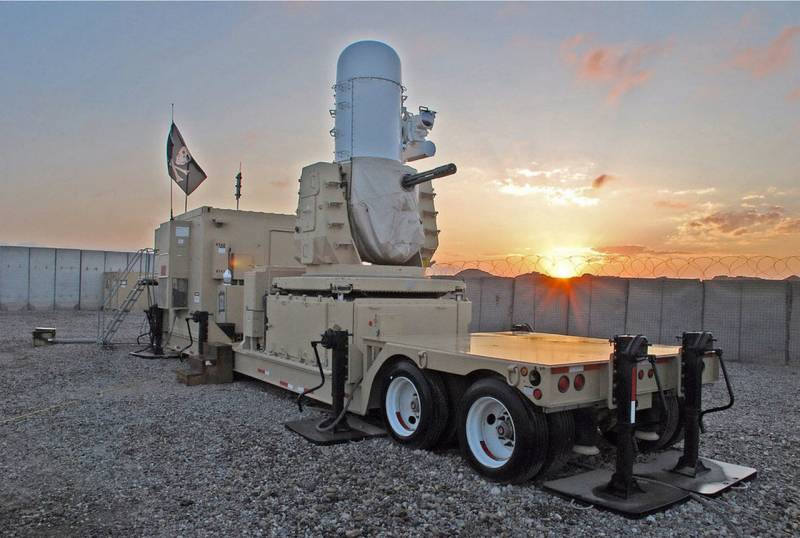What is the potential of naval ZAKs against rocket and artillery attacks on land?
As you know, both sides of the armed conflict in Ukraine suffer the main losses from artillery fire, or more precisely, from their shell fragments. While we know how to shoot down enemy aircraft, cruise and ballistic missiles, and drones, primitive projectiles still pose a serious threat. Are there any ways to protect yourself from them other than hiding in dugouts, trenches and basements?
Interception difficulties
Why is it so difficult for even the most modern air defense/missile defense system to intercept a fired artillery shell? Unlike missiles or attack drones, projectiles have a higher flight speed and relatively small size, which makes it difficult to detect and intercept them in a timely manner. There are also questions about how to intercept them.
The cost of a high-speed anti-aircraft missile can be many times higher than that of an artillery shell, which automatically leads to inevitable economic defeat in the arms race. And it is not a fact that an anti-aircraft shell exploding next to a projectile will be able to completely destroy it, and not just change the trajectory of its flight. The Israelis have long faced this problem, forced to develop the Iron Dome system against the primitive “cast iron” missiles fired at them by the Palestinians.
It turns out that only other projectiles will be effective against projectiles, if we take into account high-tech in the form of lasers and other weapons “based on new physical principles.” For a more or less confident defeat, a high-speed anti-aircraft artillery system is required, equipped with a powerful radar, a computer for targeting and control, as well as an anti-shell filled with shrapnel-type remote detonation. The range of such a ZAK will be expectedly short.
Most of the existing types of weapons fit the description of various naval short-range air defense systems. And therefore we propose to look at foreign experience in creating a ground-based anti-aircraft missile defense system.
Centurion C-ram
Fans of the navy and those who have simply watched enough Hollywood blockbusters have probably seen the work of the American naval anti-aircraft artillery system Mark 15 Phalanx CIWS more than once. This “close combat weapon system” includes, in addition to a rapid-firing six-barrel 20 mm artillery mount, two radars and a control panel.
The main purpose of the Phalanx is to destroy anti-ship missiles flying at subsonic and supersonic speeds with a wall of anti-aircraft fire in a short radius of several kilometers. If necessary, the complex can also hit surface targets. The functional analogue of the Mark 15 Phalanx is the Soviet automatic shipborne gun AK-630 and its more modern successors.
After the invasion of Iraq by the American aggressors, the occupiers faced heroic resistance from local partisans. It turned out that the most effective means of fighting the occupiers was harassing rocket and artillery attacks on their military bases, which caused significant damage and casualties among the invaders. Unguided rockets and mortar shells were widely used.
In order to cover the US military contingent, Raytheon Corporation proposed using on land the 20-mm Mark 15 Phalanx CIWS naval artillery system, which has proven itself in the navy and received a new name - Centurion C-RAM. In the original version, the anti-aircraft complex was simply moved to a towed platform designed to transport heavy armored vehicles, which brought the total weight to 24 tons. This made it impossible to transport it by air by C-130J Super Hercules military transport aircraft. Subsequently, the developers had to significantly reduce the dimensions and weight in order for the naval anti-aircraft gun to fit on a regular army truck.
The sighting and surveillance system was also significantly improved, and hardware and software changes were made to the control and guidance systems. To calculate the ballistic trajectory of a projectile and determine whether it poses a threat to the covered object and whether there is a need to fire at it, the complex is additionally equipped with an AN / TPQ-36 Firefinder counter-battery radar, which is capable of detecting targets at a range of 18-24 km, simultaneously tracking up to 20 targets and determine the coordinates of artillery positions with high accuracy. The next generation AN/TPQ-53 Target Acquisition Radar has a maximum range of 122 km against 60 mm rockets.
The rate of fire of the Centurion C-RAM, compared to the naval Phalanx, was reduced by approximately 2 times to 2000-2200 rounds/min in order to preserve the life of the barrels, which were used more actively on land than in the fleet. We also had to switch to M246 fragmentation tracer shells and M940 high-explosive fragmentation shells, which are better suited for intercepting artillery shells and mortar mines.
According to Raytheon Corporation in an interview with Navy Times, in Iraq, with the help of Centurion, the US military managed to intercept 105 ballistic targets, of which two-thirds were mortar shells. One anti-aircraft complex is capable of covering an area of 1,3 square meters. km. Subsequently, Centurion C-RAM was also used in Afghanistan. True, problems were noted with the reliability of the American equipment in the harsh climatic conditions of Iraq and Afghanistan.
Quite an interesting experiment that confirmed that short-range naval air defense can be adapted to the needs of ground forces. The fact that shipborne short-range air defense systems can be used against artillery shells is evidenced by the fact that a 114-mm artillery shell was successfully intercepted by the British Seawolf air defense system. Is this technical solution optimal?
No, there are others, which we will discuss in more detail later.

Information